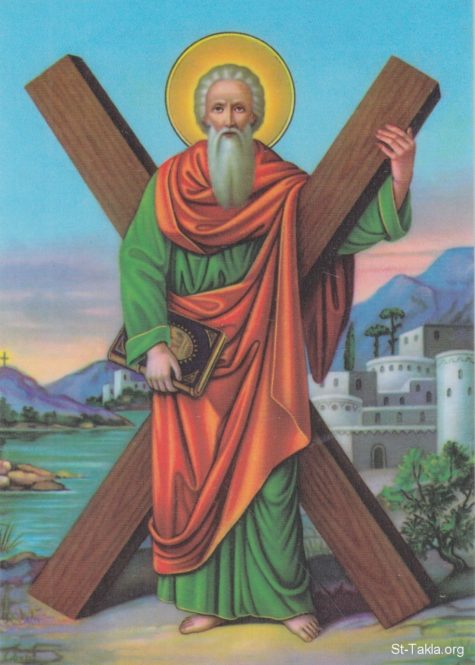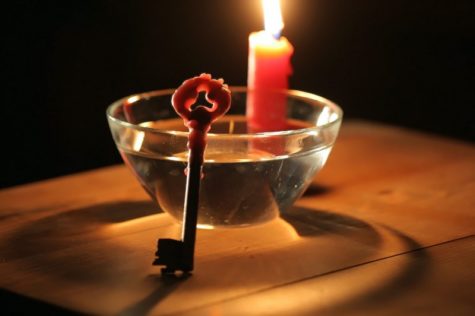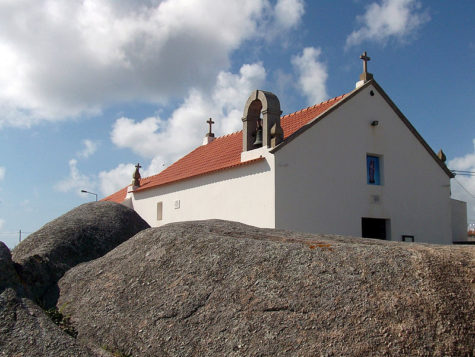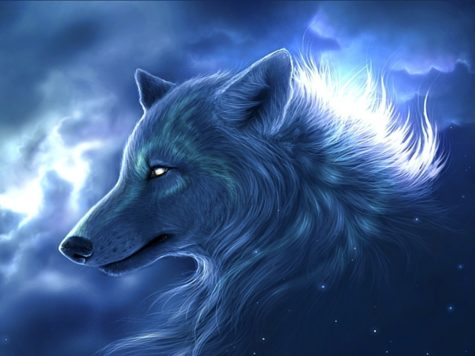Wolf
Saint Andrew’s Day is the feast day of Saint Andrew. It is celebrated on 30 November. The celebration of Saint Andrew as a national festival is thought to originate from the reign of Malcolm III (1034–1093). It was thought that ritual slaughter of animals associated with Samhain was moved to this date, so as to assure enough animals were kept alive for winter. But it is only in more recent times that 30 November has been given national holiday status.
Other names for this day include:
- Saunt Andra’s Day – Scottish
- Là Naomh Anndrais – Gaelic
- Andreasnacht – Germany
- Andreasgebet – Austria
- Andrzejki – Poland
In 2006, the Scottish Parliament passed the St. Andrew’s Day Bank Holiday (Scotland) Act 2007, which designated the Day as an official bank holiday. If 30 November falls on a weekend, the next Monday is a bank holiday instead. Although it is a bank holiday, banks are not required to close and employers are not required to give their employees the day off as a holiday.
The University of St Andrews traditionally gives the day for all the students as a free holiday, but this is not a binding rule.
The Saltire
Saint Andrew’s Day is an official flag day in Scotland. The Scottish Government’s flag-flying regulations state that the Flag of Scotland (the Saltire or Saint Andrew’s Cross) shall fly on all its buildings with a flagpole. Prior to 2002, the Scottish Government followed the UK Government’s flag days and would only fly the Union Flag on Saint Andrew’s Day. The regulations were updated to state that the Union Flag would be removed and replaced by the Saltire on buildings with only one flagpole.
The flying of the Union Flag from Edinburgh Castle on all days, including Saint Andrew’s Day causes anger among some Scottish National Party politicians who have argued that the Saltire should fly on 30 November instead. However, the Union Flag is flown by the British Army at the Castle as it still is an official British Army flag flying station.
Celebrations Around The World
In Scotland, and many countries with Scottish connections, Saint Andrew’s Day is marked with a celebration of Scottish culture with traditional Scottish food, music and dance. In Scotland the day is also seen as the start of a season of Scottish winter festivals encompassing Saint Andrew’s Day, Hogmanay and Burns Night. There are week-long celebrations in the town of St Andrews and in some other Scottish cities.
Saint Andrew’s Day is celebrated as the national day of Independence in Barbados. As the patron saint, Saint Andrew is celebrated in a number of Barbadian symbols including the cross formation of the Barbadian Coat of Arms, and the country’s national honors system which styles persons as Knights or Dames of St. Andrew.
Folklore and Pre-Christian Traditions
There are a few pre-Christian Romanian traditions connected to Saint Andrew’s Day, some of them having their origin in the Roman celebrations of Saturn. The Dacian New Year took place from 14 November until 7 December; this was considered the interval when time began its course.
One of the elements that came from the Roman and Thracian celebrations concerned wolves. During this night, wolves are allowed to eat all the animals they want. It is said that they can speak, too, but anyone that hears them will soon die.
Early on Saint Andrew’s day, the mothers go into the garden and gather tree branches, especially from apple, pear and cherry trees, and also rosebush branches. They make a bunch of branches for each family member. The one whose bunch blooms by New Year’s Day will be lucky and healthy the next year.
The best known tradition connected to this night concerns matrimony and premonitory dreams. Single girls must put under their pillow a branch of sweet basil. If someone takes the plants in their dreams, that means the girl will marry soon. They can also plant wheat in a dish and water it until New Year’s Day. The nicer the wheat looks that day, the better the year to come.[
In parts of Ukraine, Germany, Austria, Slovakia, Poland, Russia and Romania, a superstitious belief exists that the night before Saint Andrew’s Day is especially suitable for magic that reveals a young woman’s future husband or that binds a future husband to her. The day was believed to be the start of the most popular time for vampire activity, which would last until Saint George’s Eve (22 April).
In Poland, the holiday Andrzejki is celebrated on the night of the 29th through 30 November. Traditionally, the holiday was only observed by young single girls, though today both young men and women join the party to see their futures. The main ceremony involved pouring hot wax from a candle through the hole in a key into cold water.
In Romania, it is customary for young women to put 41 grains of wheat beneath their pillow before they go to sleep, and if they dream that someone is coming to steal their grains that means that they are going to get married next year. Also in some other parts of the country the young women light a candle from the Easter and bring it, at midnight, to a fountain. They ask Saint Andrew to let them glimpse their future husband. Saint Andrew is invoked to ward off wolves, who are thought to be able to eat any animal they want on this night, and to speak to humans. A human hearing a wolf speak to him will die.
Saint Andrew and Fishing
In Póvoa de Varzim, an ancient fishing town in Portugal there’s Cape Santo André (Portuguese for Saint Andrew), a place that shows evidence of Romanization and of probable earlier importance, with hints of stone age paintings. In local mythology, Saint Andrew fished the souls of those drowned at sea and helped in fisheries and marriages.
Near the cape there are small pits in a rock, a mystery stone, that the people believe these are footprints of Saint Andrew.
Saint Andrew Chapel is of probable medieval origin, referenced in 1546 and in earlier documents. It is the burial site of drowned fishermen found at the cape. Fishermen also asked intervention from the saint for better fisheries. Single girls wanting to get married threw a little stone to the roof of the chapel. Because of pagan syncretism, it is also associated with white magic up to the present day.
It was common to see groups of fishermen, holding lights in their hands, making a pilgrimage to the Cape’s chapel through the beach in Saint Andrew’s Eve. They believed Saint Andrew fished, from the depths, the souls of the drowned. Those who did not visit Santo André in life would have to make the pilgrimage as a corpse.
Sources: Wikipedia
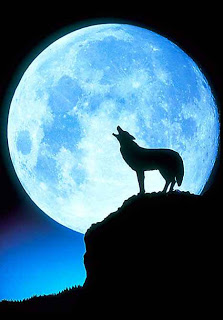 Tonight is the night of the Wolf Moon. This first full moon of the new year is a time of silence and sitting by the home fire. As the wild winter howls, appreciate the warmth of home and family.
Tonight is the night of the Wolf Moon. This first full moon of the new year is a time of silence and sitting by the home fire. As the wild winter howls, appreciate the warmth of home and family.
Now is the time to go within and plan the changes you will make in the spring. Consider now what you will plant. Start a moon journal to record your lunar tides and write down your spring dreams.
Correspondences:
- Colors: Black and white, silver
- Gemstones: Hematite
- Trees: Birch, Hazel
- Gods: Inanna, Freyja
- Herbs: Thistle, nuts and seeds, marjoram
- Element: Air
Full Moon names started with Native Americans as tribes kept track of the seasons by giving distinctive names to each recurring full Moon. The names actually applied to the entire month in which each occurred. There was some variation in the names based on tribes. European settlers followed that custom and created some of their own names.
Sometimes it is also referred to as the Cold Moon, Old Moon, or the Moon After Yule. Some called it the Full Snow Moon, but Wolf Moon seems most appropriate, in native cultures, because amid the cold and deep snows of midwinter, the wolf packs howled hungrily outside their small villages, huts, and teepees. Since the lunar month is only 29 days long on the average, the full Moon dates shift from year to year.
This is a good time to work on magic related to protection, both physical and spiritual. Use this time to develop your inner self, and advance spiritually, becoming closer to the higher aspects of your deities.
More about the Full Wolf Moon
It’s been a tough month for some of us. I thought it fitting to toss out some symbolic observations about the January Wolf Moon with a goal to offer inspiration to folks facing some challenges right now.
- Lunar Symbolism:
Before blasting off into Wolf Moon symbolism, let’s take a look at lunar implications. Subtle, cunning and soft in silky shadows, the moons meanings can be slippery. But, to those who grasp moon symbolism, great insights follow. Typically feminine in archetypal understanding, the moon carries themes of cycles and fertility.
Moreover, the moon conveys a kind of creativity that is born from veiled magic. Consider the moon’s growth cycles (waxing, full, waning, new). These phases are wrought from the moon’s movement. And, the manifestation of her development is made known to us through light and shadow.
What’s the symbolic lesson here? Progress is sometimes subtle. Manifestations of evolution often occur behind the scenes, in shadow – before we “see the light” or the end-product of our vision.
When contemplating this month’s full moon and its partnership with the Wolf, we must not cram our intellect into the void. Rather, the Wolf Moon asks us to use intuitive instinct in soft ways.
The gifts of this full moon come to our senses like steam rising over sacred waters marbled with frosty stillness.
Wolf Symbolism and Wolf Moon Solutions:
Strategic, resourceful and incredibly communicative, the Wolf is a noble mentor for humankind. Wolves have specific protocol and rank within their packs. This observation is a cue to look to community for creative solutions during this full moon. Communicate with those in your pack to help you with your challenges. But don’t break taboo. If you follow specific traditions in social communication, hold to them. In fact, use this full moon to honor traditions of your heritage. Take time to honor your elders too. Tribal rituals should be heeded this time of year.
Wolves are vastly expressive. Sure, their vocalizations (baling, howling and barking) are legendary, but Wolves also have an complex system of body language and even eye contact to convey intent and current state of being. Discipline in the pack is rarely corporeal. Rather, behavior is admonished or reinforced by intricate expressions. One look from the Alpha can convey as much power as a physical blow.
There’s big medicine in this. Use this full moon to get in touch with your own modes of expression. Explore your own eye contact and body language. Examine yourself in the mirror (yes, I’m serious) as you’re talking on the phone. View yourself objectively. What are your expressions conveying? How can you modify or enhance your body language to portray more authority or power? Or, perhaps more softness and sensuality is needed. Too often we are unconscious about our eye and body movements in the scheme of social interaction. This is a great time to ponder these nuances of communication.
Wolves are also phenomenally resourceful. In fact, their resourcefulness is partly why this moon carries the Wolf moniker. January is a brutal month in the northern regions. The frigidity of winter crunches life to a stand-still in the wild. To be sure, it’s a time of “sink or swim” to all wildlife exposed to the elements this time of year.
Wolves, however, often thrive during this lean month. They are designed to handle the brutality of cold quite well. Furthermore, as Wolves are inclined to pick off weaker animals, January offers up a host of feasting options. Perhaps we can use the resourcefulness of the Wolf to reconsider our options in life. Maybe what seems bleak or lame in our life is actually an invitation for opportunity. Food for thought.
I hope these symbolic ideas about the cold Wolf Moon inspire you to take advantage of January’s lunar fullness. Take a pause on the evening of this month’s full moon to contemplate your own inner wisdom too. I bet your findings will be illuminating.
~collected from various sources, including Symbolic Meanings
